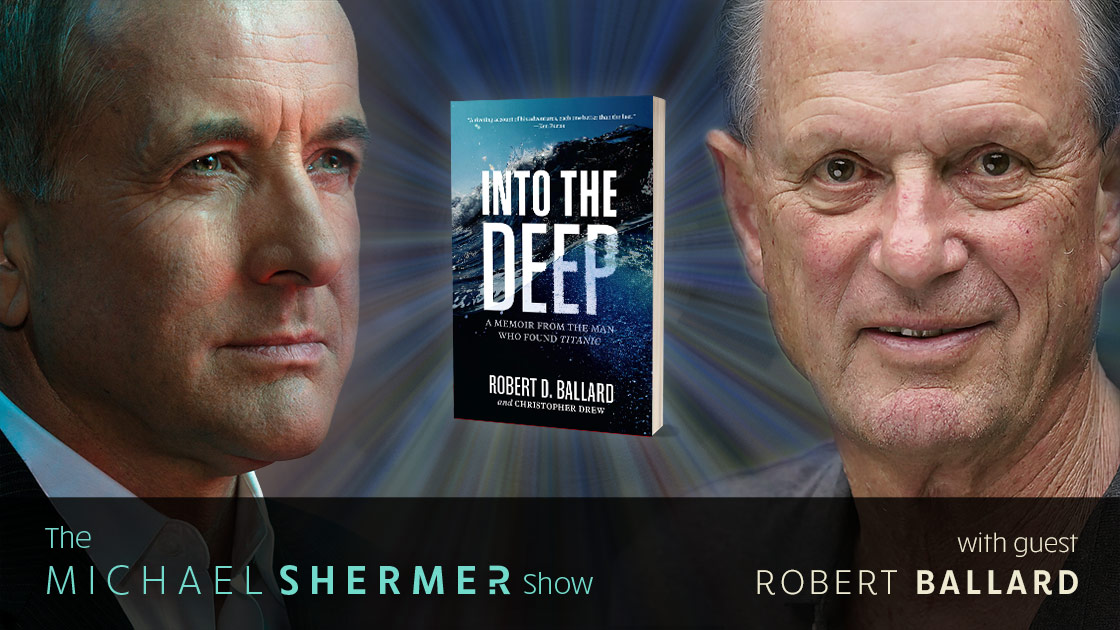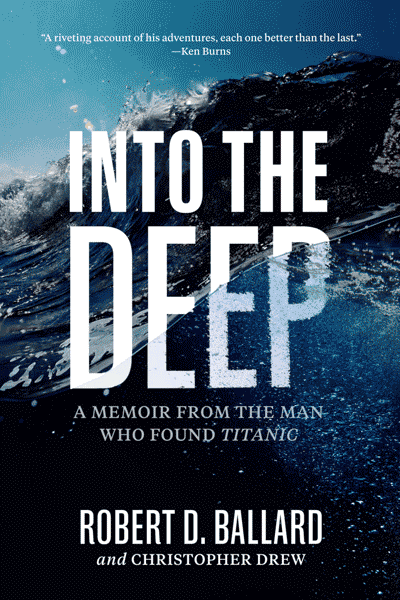In this conversation about his memoir and National Geographic special on his life, Robert Ballard takes us along his many journeys to find the Titanic, the Lusitania, the Bismarck, Nazi submarine U-166, the USS Yorktown, JFK’s PT 109, and two missing nuclear submarines under the cover of searching for the Titanic. Ballard is also a scientist, and he recalls his many important discoveries that include 750°F hydrothermal vents, undersea volcanoes, black smokers, and the confirmation of the theory of plate tectonics. Now the captain of E/V Nautilus, a state-of-the-art scientific exploration vessel rigged for research in oceanography, geology, biology, and archaeology, leads young scientists as they map the ocean floor, collect artifacts from ancient shipwrecks, and relay live-time adventures from remote-controlled submersibles to reveal amazing sea life. For the first time, Ballard gets personal, telling the inside stories of his adventures and challenges as a midwestern kid with dyslexia who became an internationally renowned ocean explorer. Here is the definitive story of the danger and discovery, conflict and triumph that make up his remarkable life. Among his many honors he holds the Explorers Club Medal, the National Geographic Hubbard Medal, and the National Endowment for the Humanities Medal.
Shermer and Ballard discuss:
- single-line summaries of a life: “the man who found the Titanic,”
- his early childhood fascination with science fiction,
- How Lives Turn Out: influences: parents, siblings, friends, teachers, mentors,
- why the sea instead of space,
-
the call of the sea. Sagan, standing on a bluff in Big Sur overlooking the Pacific Ocean:
“The universe is all that is, or ever was, or ever will be. Our contemplations of the cosmos stir us. There’s a tingling in the spine, a catch in the voice, a faint sensation as if a distant memory of falling from a great height. We know we are approaching the grandest of mysteries.”
- learning to live and learn with dyslexia to earn a Ph.D. in geophysics and marine geology,
- 4 patterns of reasoning dyslexia excel: material, interconnected, narrative, and dynamic,
-
dangers of deep-sea diving; any close calls with death?
Atmospheric pressure is always a factor to be aware of as you dive this deep. When sitting on your porch at home or walking down the street close to sea level, you have one atmosphere of pressure on you, or 14.6 pounds of force on each square inch of your body. Once you go underwater, there’s another atmosphere of pressure on you for each 33 feet that you dive. By the time we get to 3,300 feet, we have 100 atmospheres, or 1,460 pounds, pressing on every inch of Alvin’s hull from the outside. By the time we reach 9,000 feet, we have almost two tons of pressure on each square inch of the hull, enough to kill us instantly if anything goes wrong. But fortunately, our pressure hull protects us from calamity just inches away.
- Why aren’t fish crushed by the pressure?
- his major finds in exploration: the Titanic, the Lusitania, the Bismarck, Nazi submarine U-166, the USS Yorktown, JFK’s PT 109, and two missing nuclear submarines USS Thresher & USS Scorpion,
-
independence of spirit and career:
I thought of the advice my father once gave me: To have many masters is to have none. In other words, if no single person or organization controlled me, I controlled my own fate. I needed to develop my own set of donors so I wouldn’t be dependent on Woods Hole.
- his major discoveries in science: 750°F hydrothermal vents, undersea volcanoes, black smokers, and the confirmation of the theory of plate tectonics,
- how science works: Wegener’s continental drift explained by plate tectonics,
- deep hot biosphere, Thomas Gold,
- origins of life on Earth? Other planets?
-
Black Sea finds…Noah’s flood?
William Ryan and Walter Pitman, authors of Noah’s Flood: The New Scientific Discoveries About the Event That Changed History,
-
Loch Ness:
If I navigated straight down the long axis of the loch, the ship’s wake would roll out toward the rocky walls on either side and bounce off them. Long after we had passed, the two returning waves would meet back in the middle, creating a standing wave consisting of two to three humps that would last for a few seconds and then disappear. Could that have been what people had been seeing?
- his search for Amelia Earhart,
- Who owns artifacts recovered from shipwrecks?
- failure is always an option,
- the loss of his son and how he dealt with such grief,
- Joseph Campbell’s Power of Myth,
- Will humans personally explore other planets and even other solar systems?
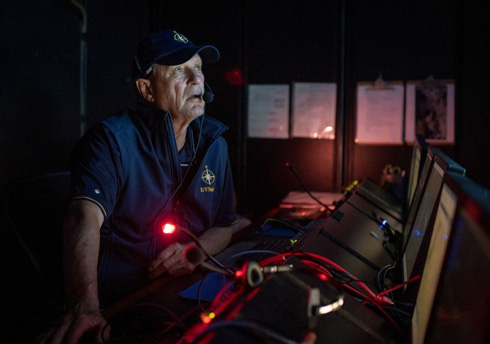
Robert Ballard in control room of the E/V Nautilus while on expedition in the South Pacific. (National Geographic/Gabriel Scarlett)
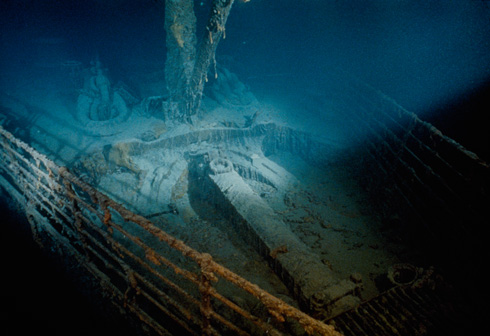
Rusted bow of the R.M.S. Titanic ocean liner in the North Atlantic. (National Geographic/Emory Kristof)
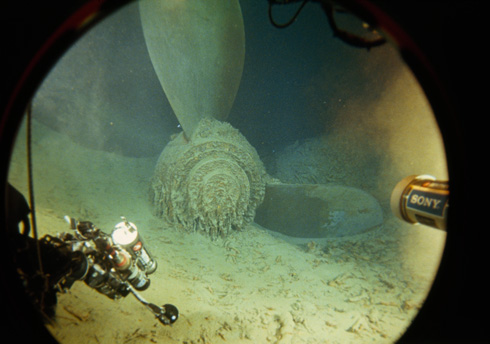
View of the propeller of the R.M.S. Titanic from the Mir submersible porthole. (National Geographic/Emory Kristof)
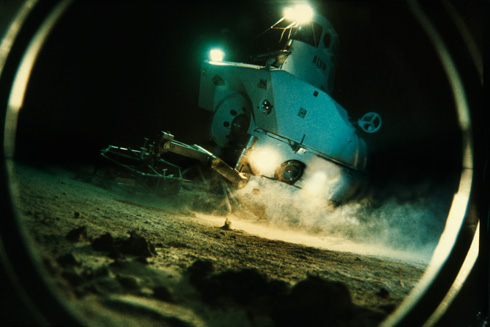
View through a porthole of the submersible Alvin exploring sea floor. (National Geographic/Emory Kristof)
If you enjoy the podcast, please show your support by making a $5 or $10 monthly donation.
This episode was released on June 16, 2021.

